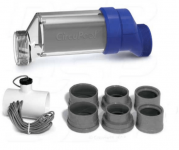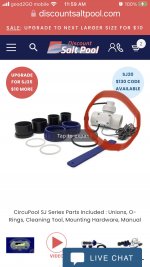My understanding is that CircuPool control box does not have the option to control the pump. You need two timer, one for the pump and the one that is built into the control box.
The Hayward AquaRite controller does have a switched outlet (either normal or twist lock depending on the model) on the bottom. You plug your pump into that, and when the SWCG switch on, it switches on the pump.
If you are getting a controller from Hayward, you need to make sure you are getting one configured for a HP cell (Hose Pipe). The Hayward HP cells are meant to be mounted horizontally, and therefor the control panel that comes with them have the board configured to use a flow switch.
The RJ (return jet) controllers are used for cells mounted vertically just below a return, and do not need a flow switch.
So an RJ unit is one case where it will only work on above ground pools (unless you somehow dig a pit next to your pool so you can mount it vertically beneath the return)




